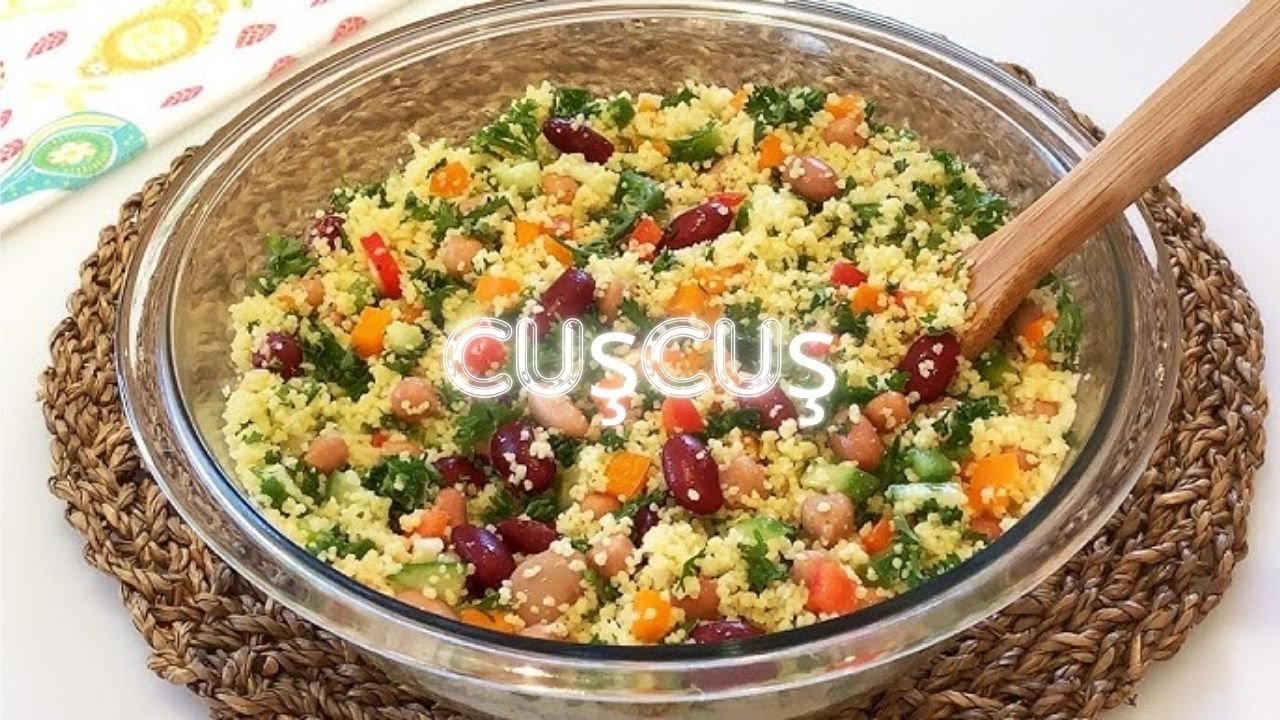Are you ready to explore one of the world’s most delightful and versatile dishes? Join us as we take a culinary adventure into the world of Cuşcuş. Originating from North Africa, Cuşcuş has gained global recognition for its unique texture, nutritional value, and delectable taste.
In this blog post, we’ll uncover the rich history of Cuşcuş, explore its nutritional benefits, and compare traditional and modern preparation methods. We’ll also highlight its versatility in various cuisines and share some delicious recipes to inspire your next meal. Whether you’re a food enthusiast, health-conscious individual, or a culinary adventurer, this guide is for you.
The Nutritional Value of Cuşcuş
Cuşcuş is more than just a delicious dish; it’s a nutritional powerhouse. Made from steamed semolina wheat, Cuşcuş is packed with essential nutrients that make it a healthy addition to any diet. It’s low in fat, high in fiber, and a good source of protein, making it an excellent choice for those looking to maintain a balanced diet.
One cup of cooked Cuşcuş provides about 6 grams of protein and 2 grams of fiber. It’s also rich in vitamins and minerals, including B vitamins, selenium, and manganese. These nutrients play a crucial role in maintaining overall health and well-being.
In addition to its nutritional benefits, Cuşcuş is incredibly versatile and can be paired with a variety of ingredients to create a balanced meal. Whether you’re adding vegetables, lean meats, or legumes, Cuşcuş can complement any dish while boosting its nutritional value.
Traditional vs. Modern Preparation Methods of Cuşcuş
Cuşcuş has been prepared traditionally for centuries, with each region adding its unique twist to the dish. Traditional preparation involves steaming semolina granules in a special pot called a couscoussier. This method ensures that the grains are fluffy and separate, creating the perfect texture.
In modern times, Cuşcuş preparation has become more convenient without compromising on taste. Instant Cuşcuş, which only requires boiling water, has become popular for its ease and quick cooking time. This makes it perfect for busy individuals who want to enjoy a delicious meal without spending hours in the kitchen.
Despite the convenience of modern methods, many still prefer the traditional way of preparing Cuşcuş. The process of steaming the grains multiple times and fluffing them by hand creates a texture that is hard to replicate with instant Cuşcuş. Whichever method you choose, the result is a delicious and satisfying dish.
Exploring the Versatility of Cuşcuş in Various Cuisines
One of the reasons Cuşcuş has gained worldwide popularity is its versatility. It can be adapted to fit various cuisines, making it a staple in many households. In North Africa, Cuşcuş is often served with meat, vegetables, and a flavorful broth. It’s a communal dish, enjoyed by families and friends gathered around a shared meal.
In the Mediterranean, Cuşcuş is used as a base for salads, mixed with fresh vegetables, herbs, and a tangy dressing. It’s a light and refreshing dish, perfect for summer gatherings. In Middle Eastern cuisine, Cuşcuş is often paired with lamb, dried fruits, and nuts, creating a rich and hearty meal.
Cuşcuş has also made its way into Western cuisine, where it is used in innovative and creative ways. From Cuşcuş-stuffed bell peppers to Cuşcuş cakes, the possibilities are endless. Its neutral flavor allows it to absorb the spices and flavors of any dish, making it a versatile ingredient in any kitchen.
Health Benefits of Consuming Cuşcuş Regularly
Incorporating Cuşcuş into your diet can offer numerous health benefits. Its high fiber content promotes digestive health by aiding in regular bowel movements and preventing constipation. Fiber also helps to keep you feeling full longer, which can aid in weight management.
Cuşcuş is a good source of complex carbohydrates, providing a steady release of energy throughout the day. Unlike simple carbs, complex carbohydrates are broken down slowly, preventing spikes in blood sugar levels. This makes Cuşcuş a great option for individuals with diabetes or those looking to maintain stable energy levels.
The vitamins and minerals found in Cuşcuş, such as selenium and manganese, have antioxidant properties that help protect the body from free radical damage. Selenium also supports a healthy immune system and thyroid function. By including Cuşcuş in your diet, you can enjoy these health benefits while savoring a delicious meal.
Cuşcuş Recipes from Around the World
Ready to get cooking? Here are some delicious Cuşcuş recipes from around the world that you can try at home:
Moroccan Cuşcuş with Lamb and Vegetables
Ingredients:
- 2 cups of Cuşcuş
- 1 lb lamb, cut into chunks
- 2 carrots, sliced
- 2 zucchinis, sliced
- 1 onion, chopped
- 1 can chickpeas, drained
- 1 tsp ground cumin
- 1 tsp ground cinnamon
- Salt and pepper to taste
Instructions:
- In a large pot, brown the lamb chunks over medium heat.
- Add the onions and cook until softened.
- Stir in the carrots, zucchinis, chickpeas, cumin, and cinnamon.
- Add enough water to cover the ingredients and bring to a boil.
- Reduce the heat and simmer for 45 minutes, or until the lamb is tender.
- Meanwhile, prepare the Cuşcuş according to the package instructions.
- Fluff the Cuşcuş with a fork and serve with the lamb and vegetable mixture on top.
Mediterranean Cuşcuş Salad
Ingredients:
- 1 cup of Cuşcuş
- 1 cucumber, diced
- 1 bell pepper, diced
- 1 cup cherry tomatoes, halved
- 1/4 cup red onion, chopped
- 1/4 cup feta cheese, crumbled
- 2 tbsp olive oil
- 1 tbsp lemon juice
- Salt and pepper to taste
Instructions:
- Prepare the Cuşcuş according to the package instructions and allow it to cool.
- In a large bowl, combine the cucumber, bell pepper, cherry tomatoes, red onion, and feta cheese.
- Add the cooled Cuşcuş to the bowl and mix well.
- Drizzle with olive oil and lemon juice, and season with salt and pepper.
- Toss to combine and serve chilled.
Middle Eastern Cuşcuş with Dried Fruits and Nuts
Ingredients:
- 1 cup of Cuşcuş
- 1/4 cup dried apricots, chopped
- 1/4 cup raisins
- 1/4 cup slivered almonds
- 1/4 cup pine nuts
- 1 tbsp honey
- 1 tsp ground cinnamon
- 1/2 tsp ground cardamom
Instructions:
- Prepare the Cuşcuş according to the package instructions.
- In a large bowl, combine the dried apricots, raisins, slivered almonds, and pine nuts.
- Add the prepared Cuşcuş to the bowl and mix well.
- Drizzle with honey and sprinkle with ground cinnamon and cardamom.
- Toss to combine and serve warm.
You May Also Like: Dönrt Unveiled: Cultural and Modern Significance
Conclusion
Cuşcuş is a versatile and nutritious dish that has captured the hearts of food enthusiasts, health-conscious individuals, and culinary adventurers worldwide. Whether you prefer traditional preparation methods or modern conveniences, Cuşcuş offers a delightful culinary experience that can be adapted to suit various tastes and cuisines.
By incorporating Cuşcuş into your diet, you can enjoy its numerous health benefits while exploring a world of flavors and textures. From Moroccan Cuşcuş with lamb and vegetables to Mediterranean Cuşcuş salad and Middle Eastern Cuşcuş with dried fruits and nuts, there are endless possibilities to discover and enjoy.
We hope this guide has inspired you to try Cuşcuş and experiment with different recipes in your kitchen. If you’re looking for more tips and inspiration, don’t hesitate to book a call with one of our culinary experts who can help you refine your skills and create the perfect Cuşcuş dish.
FAQs
What is Cuşcuş made from?
Cuşcuş is made from steamed semolina wheat, which is derived from durum wheat. It’s typically formed into small granules and can be used as a base for various dishes.
How do I store Cuşcuş?
Store dry Cuşcuş in an airtight container in a cool, dry place. Once cooked, keep it in the refrigerator in a sealed container and consume it within 3-4 days.
Can Cuşcuş be gluten-free?
Traditional Cuşcuş is made from wheat, so it contains gluten. However, there are gluten-free alternatives available, such as Cuşcuş made from rice, corn, or quinoa.
What dishes can I make with Cuşcuş?
Cuşcuş is incredibly versatile and can be used in salads, stews, and as a side dish. You can also use it in stuffed vegetables, as a base for grain bowls, or even in desserts with dried fruits and nuts.
Is Cuşcuş suitable for vegans?
Yes, Cuşcuş is plant-based and suitable for vegans. It can be paired with various vegetables, legumes, and plant-based proteins to create delicious vegan meals.











